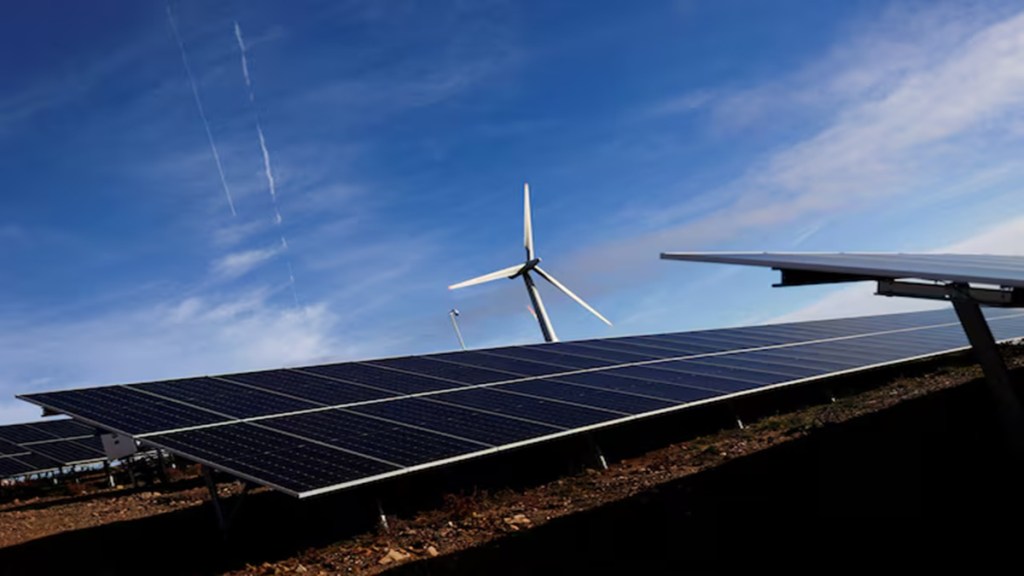By VP Singh, Pradeep S Mehta & Akash Sharma Singh is former governor of Punjab; Mehta and Sharma work for CUTS International, a global public policy research and advocacy group
India needs to install nearly 50 gigawatt (Gw) of renewable energy (RE) each year to reach its goal of 500 Gw of non-fossil fuel-based energy capacity by 2030. A large part of this—around 300 Gw—is expected to come from solar power. However, based on recent installation trends, India will need to deploy close to 10 Gw more solar capacity annually than the average of the past few years to stay on course.
While solar power is auctioned almost every fortnight and developers are actively securing capacity, strengthening the power transmission network remains crucial to ensure that the generated power can be effectively delivered and utilised. Captive solar also holds considerable promise, and unlocking its potential can make a meaningful contribution toward achieving our RE targets.
Solar power plants in India are typically commissioned within 12-18 months, depending on their capacity and location. In contrast, dedicated transmission infrastructure can take three to four years to become operational. This mismatch creates a significant lag between project completion and the actual injection of power into the grid. Even when connected, many plants face curtailment due to grid congestion, limiting the full utilisation of installed capacity.
According to the International Energy Agency, nearly 3,000 Gw of RE capacity globally was awaiting grid connectivity as of 2024, with India among the countries facing the biggest backlogs. This is despite the commendable work of the Power Grid Corporation of India, which has built a robust national transmission network across such a vast and diverse geography. Notably, over 30% of India’s total transmission capacity has been added in just the last decade—a testament to sustained institutional effort and commitment.
Solar power project developers also cite land acquisition and right of way (RoW) as significant hurdles to timely project commissioning. With the majority of projects concentrated in the western and southern states—including Rajasthan, Gujarat, Maharashtra, and Tamil Nadu—further expansion in these areas risks deepening technical bottlenecks and may also lead to growing social tensions and community resistance.
The Ladakh Green Energy Corridor serves as a strong example of how transmission and connectivity challenges can be addressed effectively. Currently under development with an allocation of over `20,000 crore, this transmission system is designed to evacuate 13 Gw of RE from Ladakh and transfer it into the national grid. More such projects are needed in similar regions, where high solar irradiation levels can result in a higher capacity utilisation. Additionally, the vast, sparsely populated landscapes significantly reduce issues related to land acquisition and RoW.
Establishing transmission infrastructure in the northern and north-eastern regions can also help harness the significant hydropower potential of neighbouring countries such as Nepal and Bhutan. This aligns well with the vision of One Sun, One World, One Grid, provided enabling regulations are formulated and these countries receive financial assistance and a guaranteed market for the sale of power.
The challenge of India’s transmission bottlenecks stems partly from limited industry involvement. Despite significant private investment in RE generation, both as investors and project developers, the power transmission sector has seen limited private participation. According to the ministry of power, of the 37 Inter-State Transmission System projects awarded to private entities, only 13 have been commissioned, 20 are under construction, and four have been cancelled. Data from NITI Aayog further reveals that just 9% of India’s transmission lines are built by the private sector, either independently or through joint ventures with government agencies, underscoring the sector’s heavy reliance on public investment.
Private capital is making inroads into various clean energy and allied sectors, and even the traditional barriers to entry in nuclear energy appear to be easing. It is now essential to channel more private investment into the transmission sector for accelerating the development of infrastructure critical to achieving clean energy goals.
Another complementary and effective strategy would be to proactively promote captive solar plants. Regulations governing captive solar projects are largely focused on self-consumption, with rigid requirements around equity ownership, minimum power offtake, and battery storage. However, reforming the captive and group captive frameworks could be a game changer for the sector. Such reforms would enable a broader range of industries to access affordable and reliable clean energy, with attendant advantages.
While the Green Energy Open Access Rules have helped streamline procedures and introduced banking facilities, they fall short of addressing key barriers to the scalability of captive solar. To unlock its potential, policy efforts must focus on incentivising private investment in transmission infrastructure and standardising banking mechanisms across states. Expanding captive solar will generate additional revenue for utilities and boost the trading of RE certificates, supporting obligated entities in meeting renewable purchase obligations. A broader approach must also be adopted—one that goes beyond captive models to attract larger volumes of private investment across the RE ecosystem.
India is now among the leading producers of RE—a remarkable achievement that merits recognition. Just a decade ago, its installed RE capacity stood at around 40 Gw. Since then, it has expanded at a compound annual growth rate of nearly 19%, crossing the 200-Gw mark by late 2024.
As a leading voice of the Global South, India must continue to set an example, reinforcing its commitment to clean energy and demonstrating to the global community that it is leaving no stone unturned in building a sustainable energy future.

